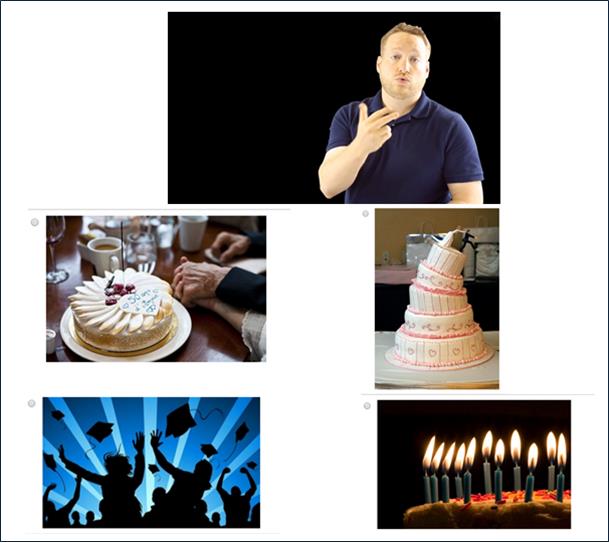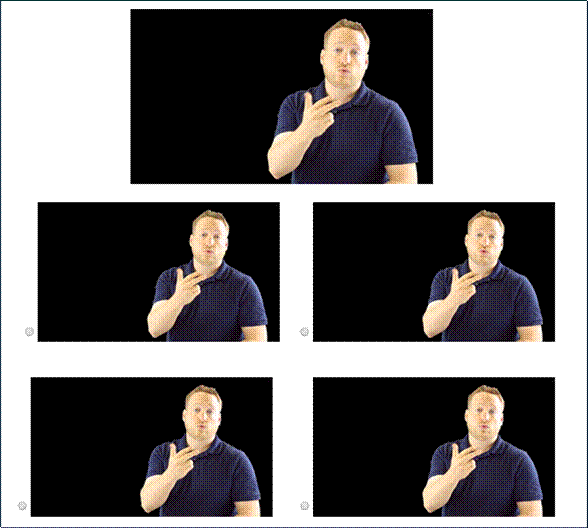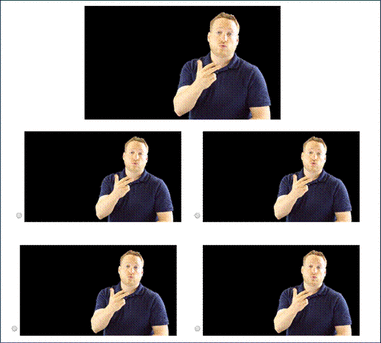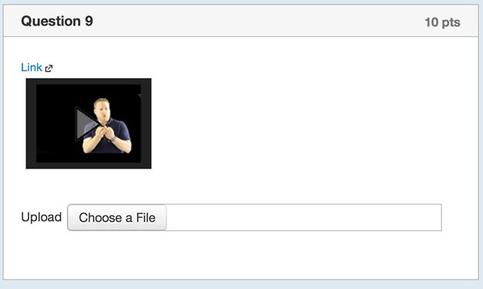Sample Assessment Tools
Most American Sign Language (ASL) courses meet only a few times every week, providing limited time for students to apply what is learned in authentic conversations. In my courses, such as ASL 1, students are expected to complete interactive online modules before coming to class so they can be ready to engage with the instructor and other students with the newly acquired language skills. In the online modules, students will watch an instructional video about a selected topic such as the one shown to the right, which will introduce ASL vocabulary and grammar that builds upon what the student already knows yet challenges them with comprehensible input. In line with the Direct Method, the classroom environment and interactive online modules will be created to encourage total immersion in ASL and non-verbal communication. All online and classroom materials such as pictures, videos, and other media will emphasize the use of ASL. All assessments will use ASL as well.
After watching the instructional video for the online module, students will complete an interactive quiz for homework before attending class to check their comprehension of ASL vocabulary and grammar. The questions on the unit exam such as the ones below will be similar to the interactive quizzes so students will be able to focus on taking the exam rather than struggling with an unfamiliar format. The homework will be graded based on completion of the interactive quizzes, which can be taken an unlimited number of times at the student’s pace. The goal is for the student to arrive to class feeling confident and ready to communicate with others.
In the classroom, students will have the opportunity to demonstrate the language skills they acquired through the interactive online modules. The instructor will briefly review the vocabulary and grammar while encouraging students to create new sentences based on their experience and interests.
Through the Communicative Language Teaching method, students will participate in paired, group, and class activities that encourage them to communicate and negotiate. Form-focused lessons and corrective feedback using repetition, elicitations, and metalinguistic clues will be done during class to support the ASL vocabulary and grammar students learned through interactive online modules.
At the end of each unit, there will be an exam, which includes ten questions worth ten points each using a similar format as the interactive quizzes. To ensure content validity of the exam, questions will be developed based on how much time each topic is taught during the unit with special attention to relevant grammar and vocabulary.
Through the Communicative Language Teaching method, students will participate in paired, group, and class activities that encourage them to communicate and negotiate. Form-focused lessons and corrective feedback using repetition, elicitations, and metalinguistic clues will be done during class to support the ASL vocabulary and grammar students learned through interactive online modules.
At the end of each unit, there will be an exam, which includes ten questions worth ten points each using a similar format as the interactive quizzes. To ensure content validity of the exam, questions will be developed based on how much time each topic is taught during the unit with special attention to relevant grammar and vocabulary.
The unit exam can be administered during class using a set of smart tablets available through the university’s instructional technology department. The exam will be set up online and the browser on the smart tablets will be locked to prevent students from trying to search the Internet or cheat through some other way. Providing additional time through Canvas settings can accommodate students with disabilities who require it. Because the exam is online using and can be set up using smart tablets, it can be proctored by disability services or another faculty or staff.
Reference
Lentz, E. M., Mikos, K., & Smith, C. (2008). Signing naturally units 1-6. San Diego, CA: DawnSignPress.
Lentz, E. M., Mikos, K., & Smith, C. (2008). Signing naturally units 1-6. San Diego, CA: DawnSignPress.






